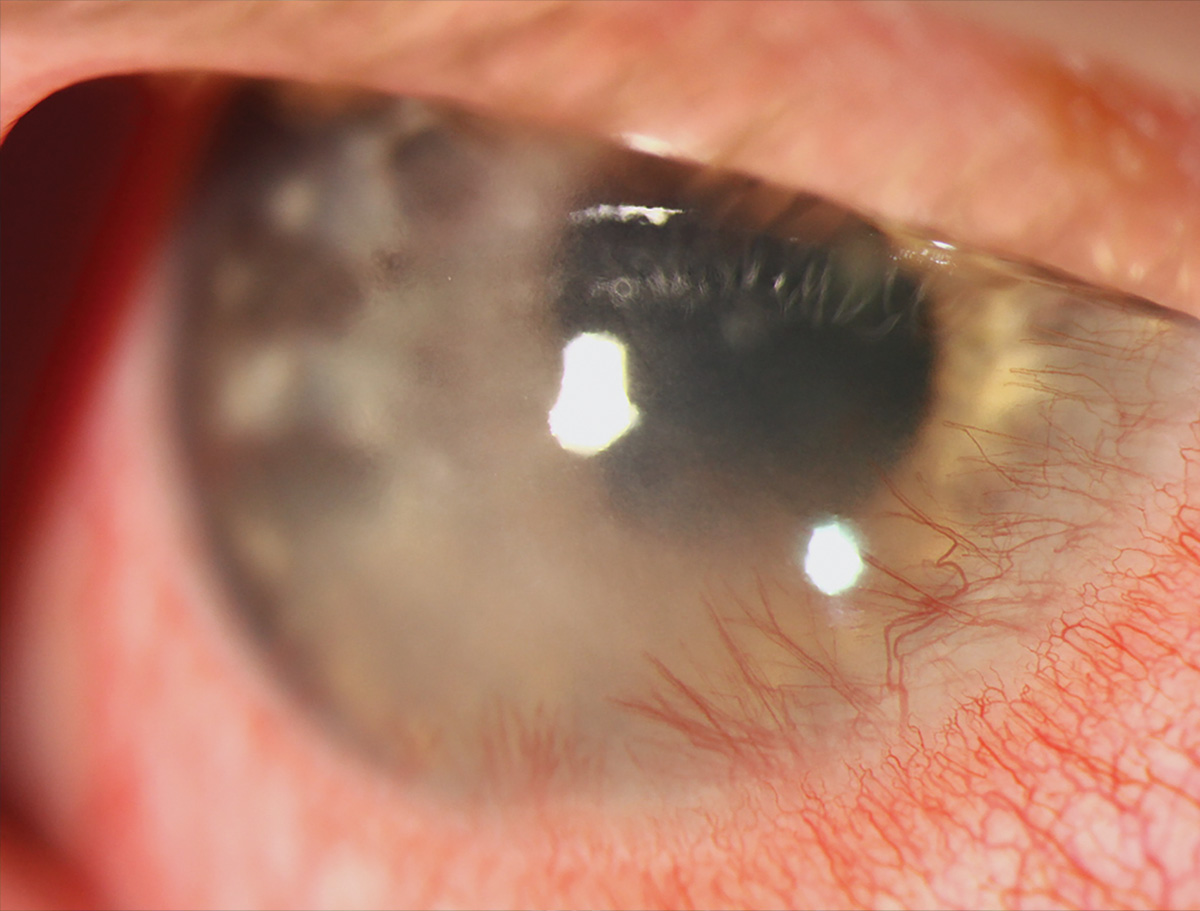 |
|
Be mindful of elevated corneal scarring risks in pediatric HKC patients, this research advises. Photo: Alison Bozung, OD. Click image to enlarge. |
Pediatric ocular surface inflammatory diseases can greatly impact the vision and quality of life of these young patients, but limited data has been presented of the three most common forms—blepharokeratoconjunctivitis (BKC), herpetic keratoconjunctivitis (HKC) and vernal keratoconjunctivitis (VKC). In research presented at ARVO 2024 this week, researchers investigated the clinical features and practice patterns of these conditions using a real-world data asset with de-identified administrative claims and electronic health record data.
A total of 6,116 patients aged 18 years and younger with BKC, HKC or VKC who had an appointment with a medical professional over a one-year span were included. Clinical information from six months before to three years following the encounter (index date) were analyzed.
Many differences were found among these diseases in clinical presentation and management. Corneal complications were found to be more prominent in HKC, while high-potency corticosteroid use was more common in those with BKC. The limited use of topical immunomodulators suggests the potential for improving treatment approaches, the authors noted.
“Up to the index date, blepharitis was observed in 5.3%, with higher rates in BKC (13.5%) than HKC (4.9%) and VKC (3.6%),” the researchers explained in their ARVO abstract. “Giant papillary conjunctivitis was found in 10.4% of BKC, 11.3% of VKC and only 3.6% of HKC cases. Corneal scarring and ulceration rates were significantly higher in HKC compared to BKC and VKC both before and after the index date.
“In the follow-up period, topical corticosteroids were commonly used (high-potency: 14.9%, low-potency: 15.9%), with BKC cases more likely to receive high-potency corticosteroids,” the authors continued. “Topical immunomodulators were prescribed in 1.7% of cases, and oral antibiotics in 30.6% overall. Antivirals were more common in HKC cases (23.7%). Surgical interventions for complications were uncommon (n=21, 0.3%), with corneal perforations (<1%) limited to BKC cases.”
Original abstract content ©2024 Association for Research in Vision and Ophthalmology.
Boghosian T, Perez C, Coleman A, et al. Pediatric ocular surface inflammatory diseases (POSID): clinical feature and practice patterns. ARVO 2024 annual meeting. |


